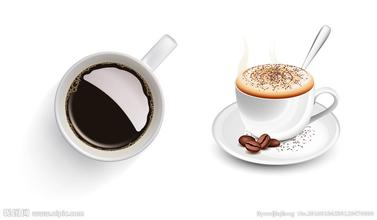Columbia Coffee Manor Flavor and Taste characteristics Variety Brand quality introduction to Santa Rita Manor
After the founding of the United States, there was a dispute over the location of the capital. The North wants to locate its capital in New York. And the south wants the capital to be located in the south. In the end, both the North and the South of the United States
Washington, D.C. Flag
Washington, D.C. Flag
Give in and build a new city as the capital of the United States in the south not far from the north. The location is located by Madison (James Madison,1751-1836, the fourth President of the United States) and Alexander Hamilton (Alexander Hamilton, January 11, 1757-July 12, 1804, one of the drafters of the Constitution, was the first Treasury Secretary of the United States) in Thomas Jefferson (April 13, 1743, ─ was the third President of the United States on July 4, 1826). It was also discussed at a dinner invited by the main drafter of the American Declaration of Independence. At that time, the "federal" city was planned as a diamond area covering an area of 100 square miles. Its actual location on the Potomac River is determined by President Washington, who himself suggested that the capital of the United States be called a "federal city." But on September 9, 1791, the capital of the United States was named Washington. Although Washington himself lives in Mount Vernon not far from Washington, he rarely visits Washington.
Washington was planned by U.S. Army Major Pierre Charles Ladyman 39, who also designed New York's Federal Hall. The planning at that time
Washington, D.C. Emblem
Washington, D.C. Emblem
It is based on horse-drawn carriages as a basic means of transportation, so Washington's road system is not suitable for modern motor transportation systems. At present, Washington is regarded as the city with the worst road traffic conditions in the United States. From 1791 to 1792, Andrew Ellicott and Benjamin Banneker, an African-American free man, surveyed the boundaries of the District of Columbia, burying a boundary marker per mile. Many of these boundary markers still exist. The foundation of the White House was laid on October 13, 1792. On August 24, 1814, British forces captured the District of Columbia and burned down most public buildings during the War of 1812. The American army failed to organize effective defenses and fled after burning down the naval shipyard. British troops burned down US government buildings such as the US Parliament, the White House and the Treasury. It is generally believed that the British burned Washington in retaliation for the American invasion and burning of Toronto (known as York at the time). But British action was limited to public buildings, while American troops destroyed many houses when they burned down Toronto, causing many Canadians to sleep on the streets in winter. In 1847, land on the south bank of the Potomac River was returned to Virginia. Before the outbreak of the American Civil War, Washington was a small town with only a few thousand people living. After the outbreak of the American Civil War, due to the needs of the war, the US government expanded rapidly and the population of Washington increased significantly.
The main varieties of Colombian coffee are small grains of coffee. Plants are small trees or large shrubs, 5-8 m tall, usually much branched at base; old branches gray-white, nodes dilated, young branches glabrous, compressed. Leaves thinly leathery, ovate-lanceolate or lanceolate, 6-14 cm long and 3.5-5 cm wide, apex long acuminate, acuminate part 10-15 mm long, base cuneate or slightly obtuse, rarely rounded, entire or shallowly wavy, both surfaces glabrous, lower vein axils with or without small pores; midrib raised on both surfaces of leaf, 7-13 on each side of lateral veins; petiole 8-15 mm long Stipules broadly triangular, arising from the tip of the upper part of the young branch conical or awn tip, the tip of the old branch is often protruding tip, 3-6 mm long. Cymes several clustered in leaf axils, each with 2-5 flowers, without a total pedicel or with a very short peduncle; flowers fragrant, with pedicels 0.5-1 mm long; bracts base ±connate, dimorphic, 2 broadly triangular, nearly equal in length and width, the other 2 lanceolate, 2 times as long as wide, leaf-shaped; calyx tubular, 2.5-3 mm long, calyx eaves truncate or 5-denticulate. Corolla white, length varies from breed to breed, generally 10-18 mm long, apically often 5-lobed, rarely 4-or 6-lobed, lobes often longer than Corolla tube, tip often obtuse; anthers protruding from Corolla tube, 6-8 mm long; style 12-14 mm long, stigma 2-lobed, 3-4 mm long. Berries broadly elliptic, red, 12-16 mm long, 10-12 mm in diameter, exocarp dura, mesocarp fleshy, sweet at maturity; seeds raised abaxially, ventral flat, longitudinally grooved, 8-10 mm long and 5-7 mm in diam. Florescence from March to April

Important Notice :
前街咖啡 FrontStreet Coffee has moved to new addredd:
FrontStreet Coffee Address: 315,Donghua East Road,GuangZhou
Tel:020 38364473
- Prev

Flavor and taste characteristics of Panamanian Coffee Manor Ireta Manor introduces Panamanian coffee beans
Hartman's story, like his coffee, is legendary. Hartman Manor is located in Chilidge, Santa Clara. The founder's name is Ellis Strauss Hartman. He was born on June 20, 1891 in the Moravilla region of Austria and Hungary in what is now the Czech Republic, and died on May 25, 1970 at the age of 78. Today's Hartman Manor is a
- Next

The pleasant aroma of Costa Rican Coffee Manor introduces the flavor and taste of Saint Roman Manor
A total of 34 natural parks have been established and developed in Costa Rica, and by 2014, they have all become important tourist attractions for earning foreign exchange. According to statistics released by Colombia's National Nature Conservation Agency, in the first half of 2003, more than 500,000 visitors visited natural parks, earning more than 2 million US dollars, an increase of 2.3 times over last year. The leader of the increase in income from natural parks in Costa Rica
Related
- Does Rose Summer choose Blue, Green or Red? Detailed explanation of Rose Summer Coffee plots and Classification in Panamanian Jade Manor
- What is the difference between the origin, producing area, processing plant, cooperative and manor of coffee beans?
- How fine does the espresso powder fit? how to grind the espresso?
- Sca coffee roasting degree color card coffee roasting degree 8 roasting color values what do you mean?
- The practice of lattes: how to make lattes at home
- Introduction to Indonesian Fine Coffee beans-- Java Coffee producing area of Indonesian Arabica Coffee
- How much will the flavor of light and medium roasted rose summer be expressed? What baking level is rose summer suitable for?
- Introduction to the characteristics of washing, sun-drying or wet-planing coffee commonly used in Mantenin, Indonesia
- Price characteristics of Arabica Coffee Bean Starbucks introduction to Manning Coffee Bean Taste producing area Variety Manor
- What is the authentic Yega flavor? What are the flavor characteristics of the really excellent Yejasuffi coffee beans?

